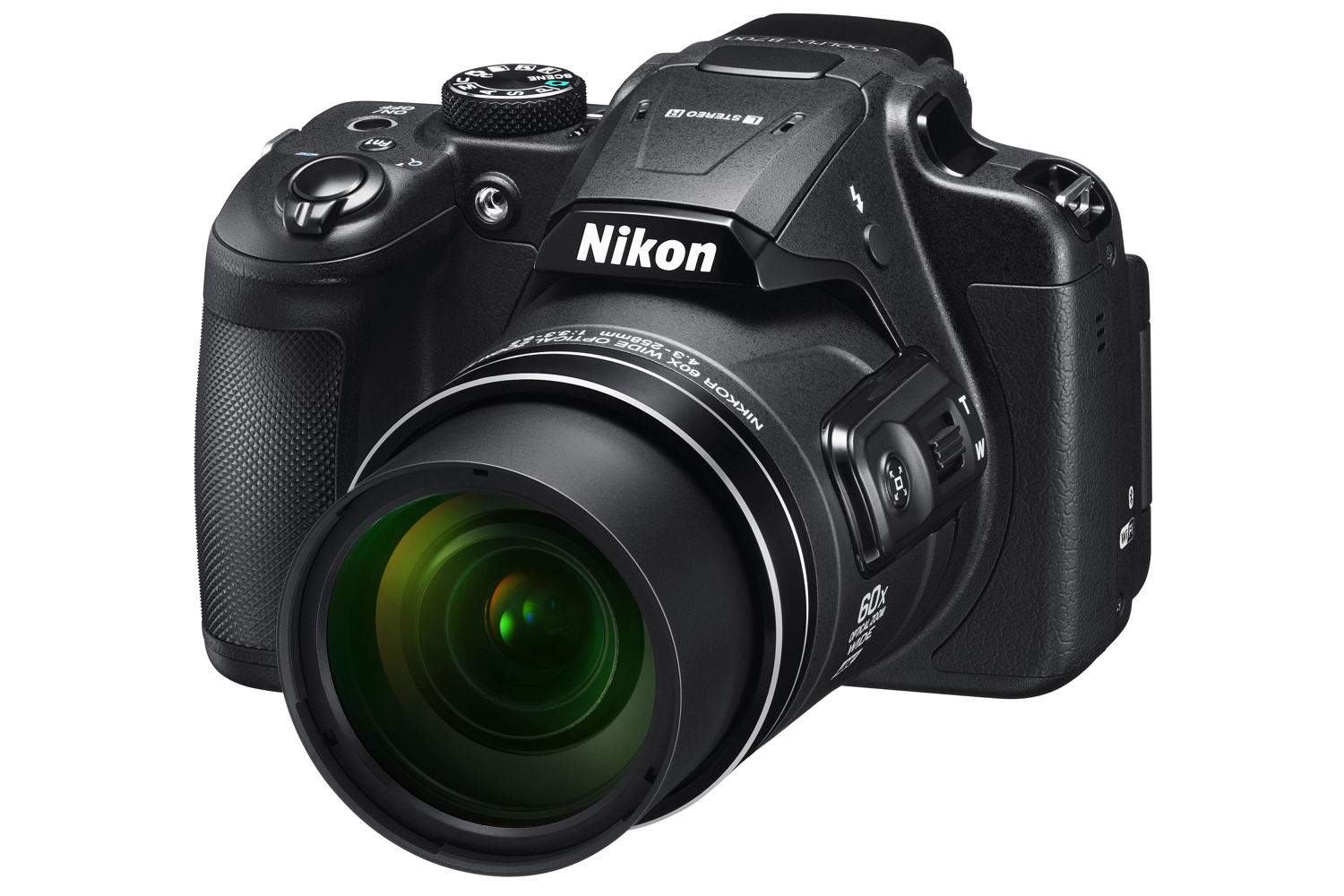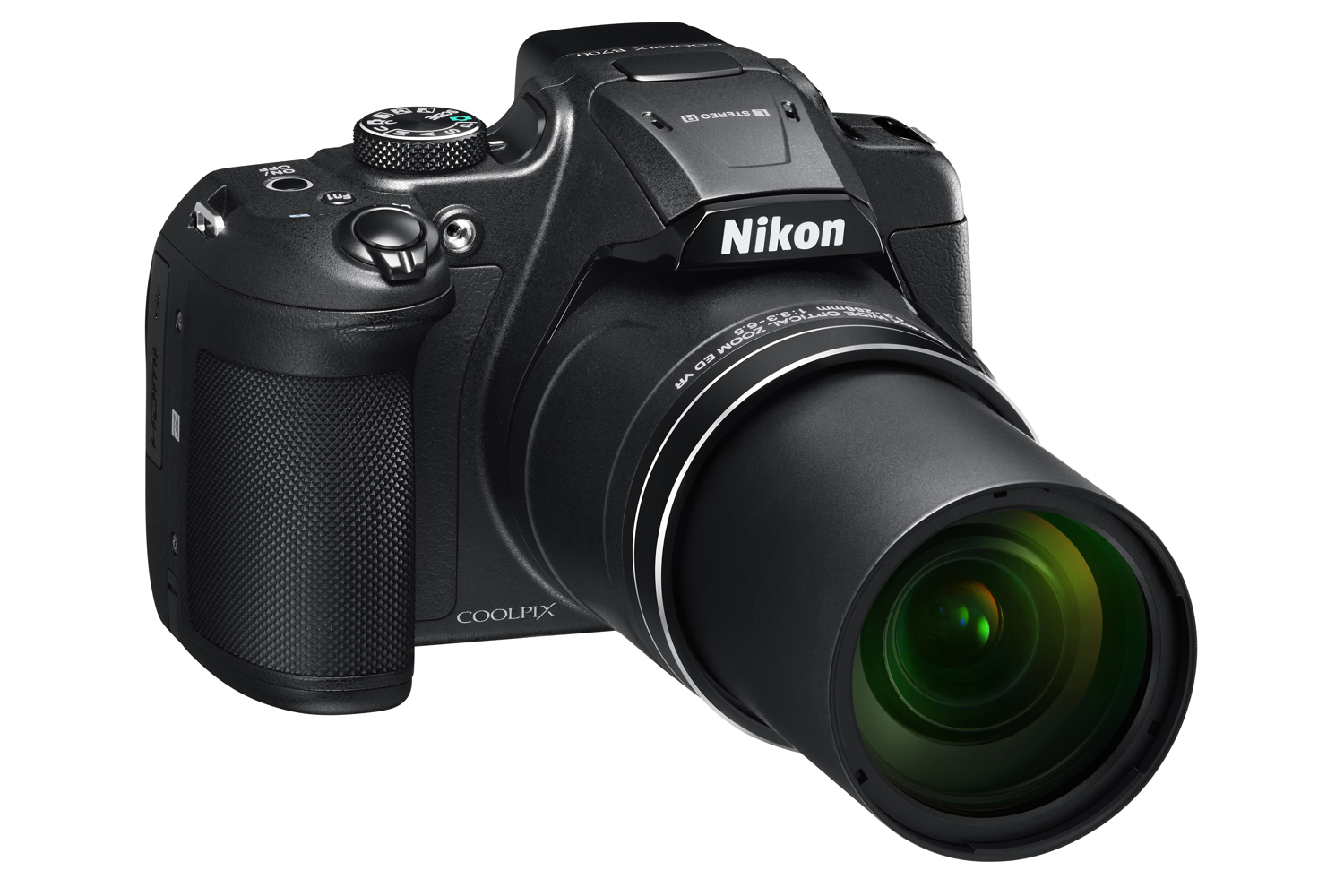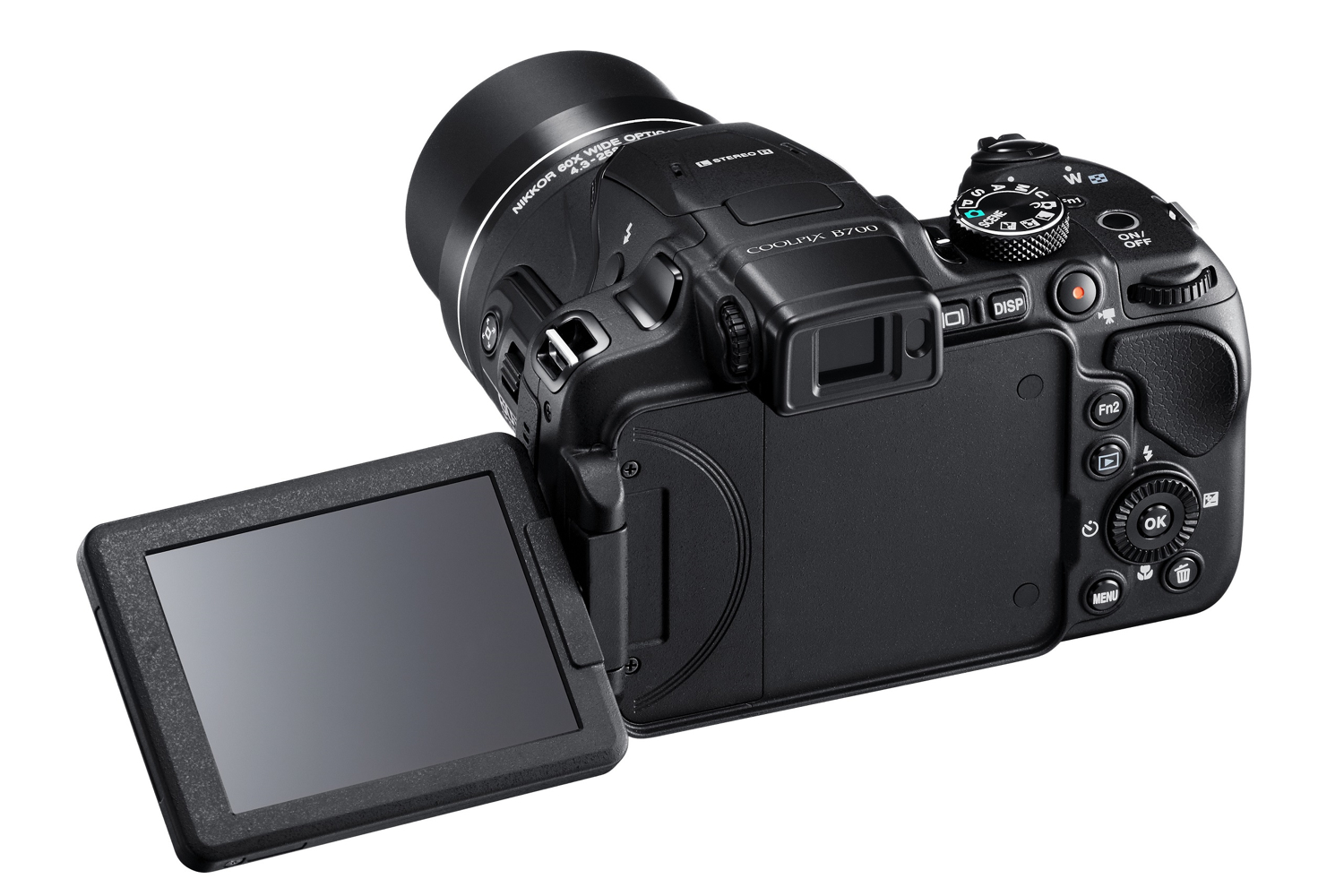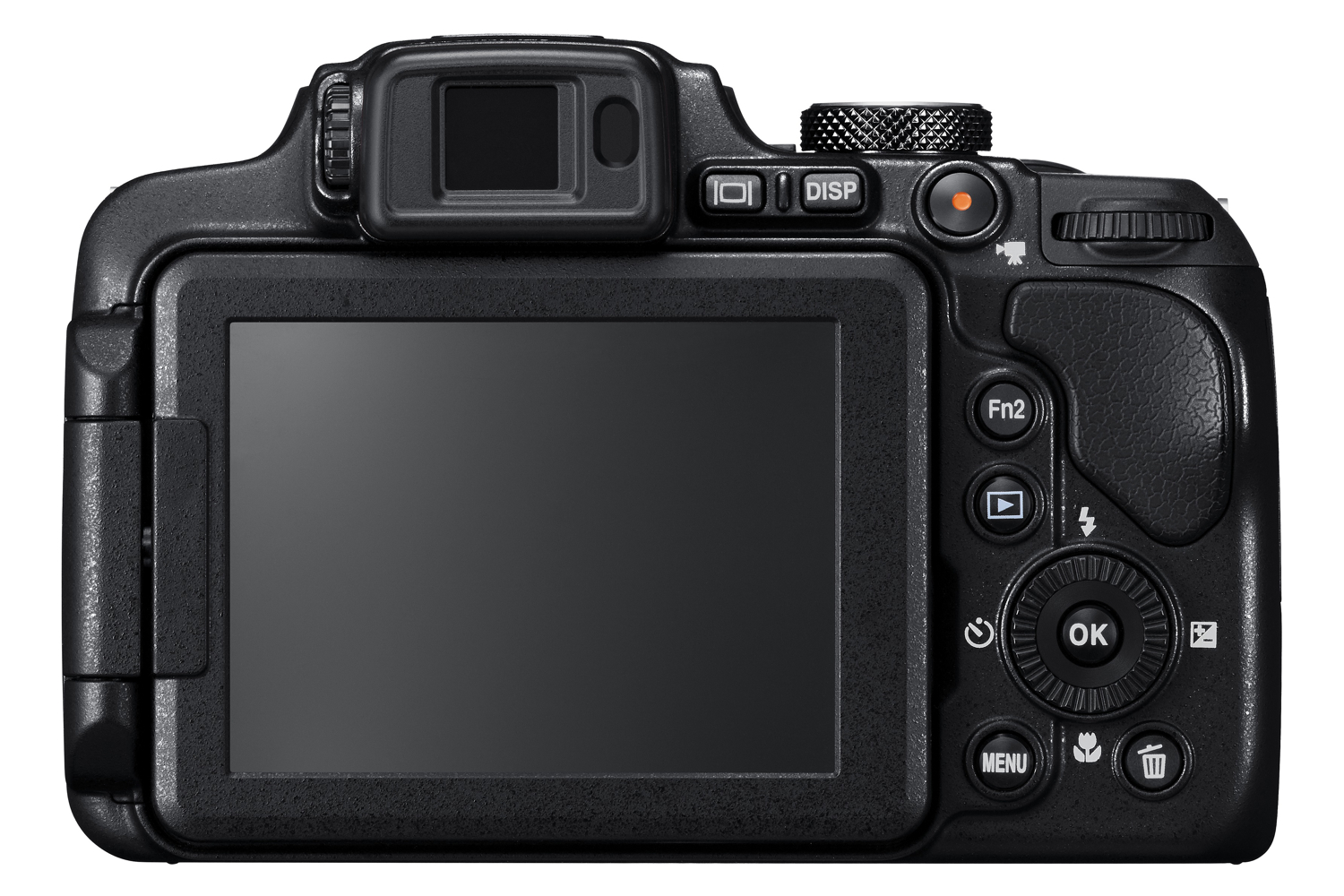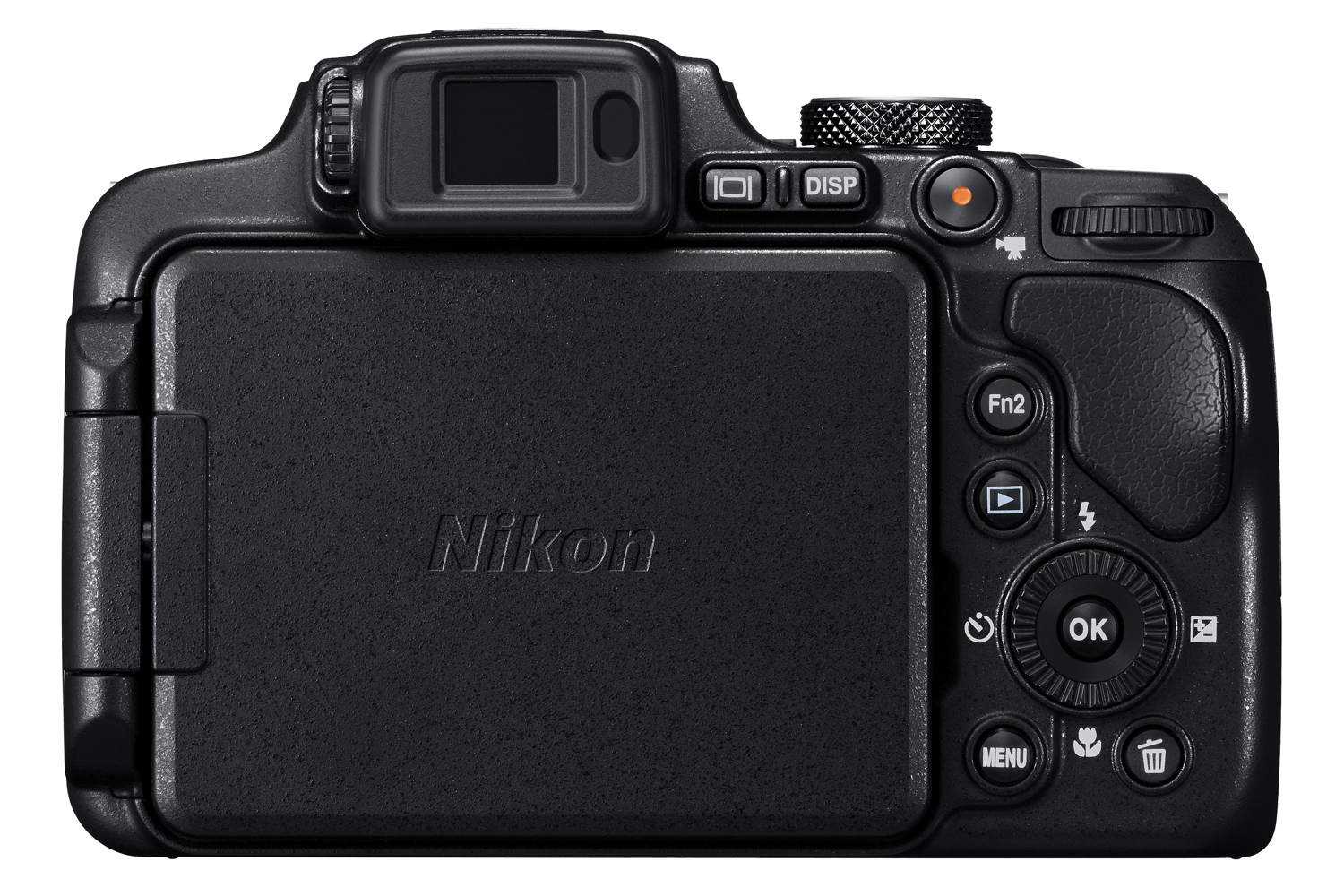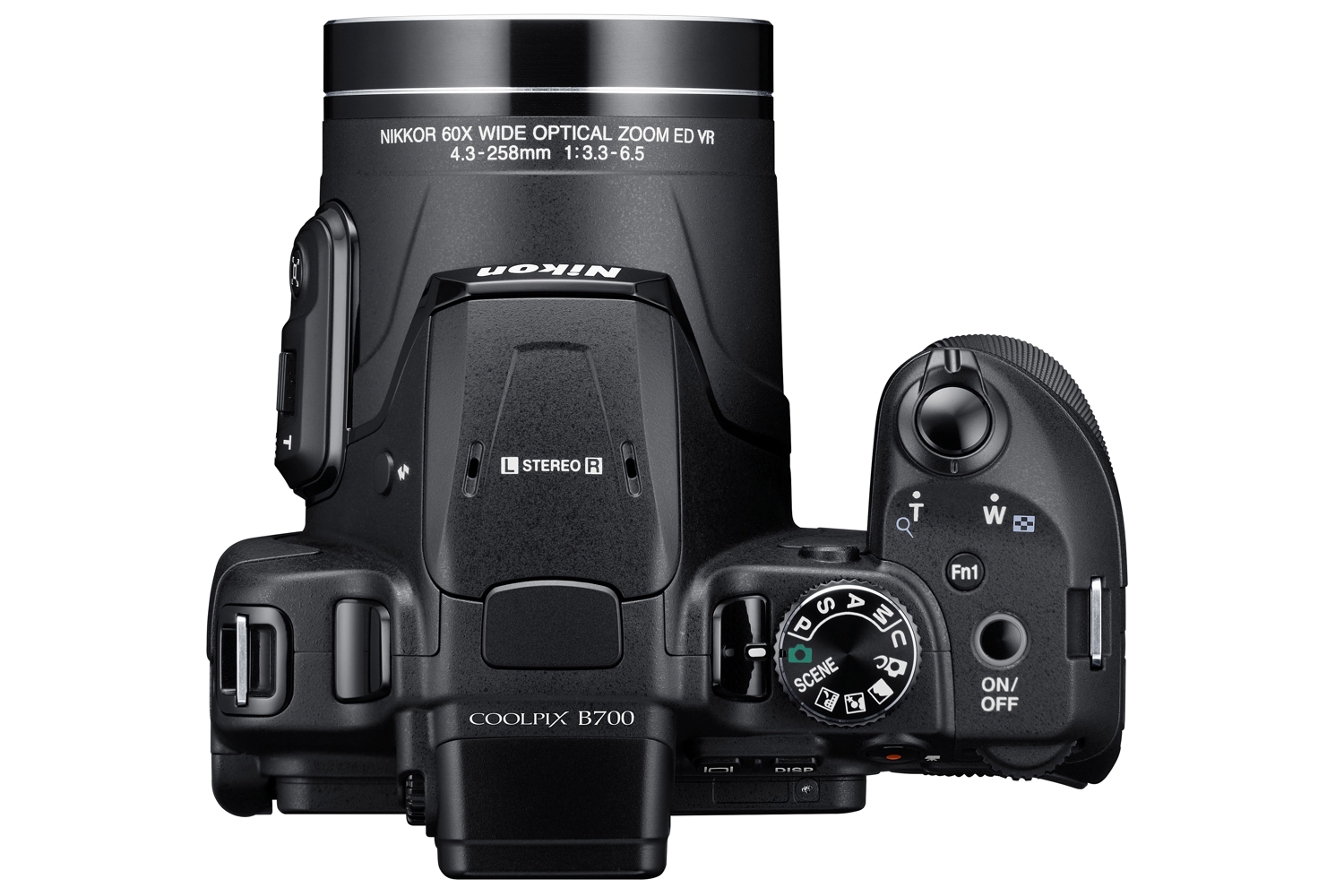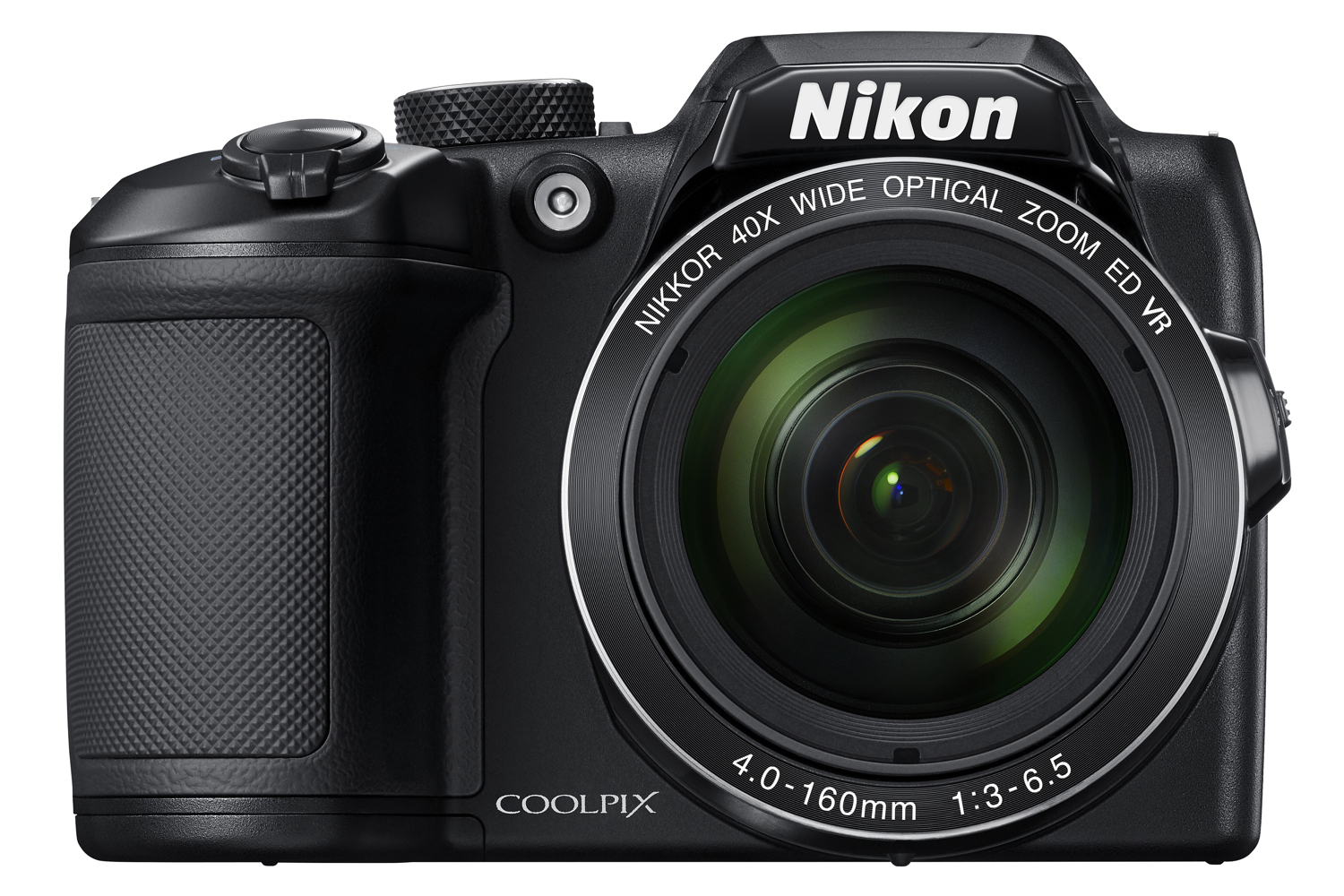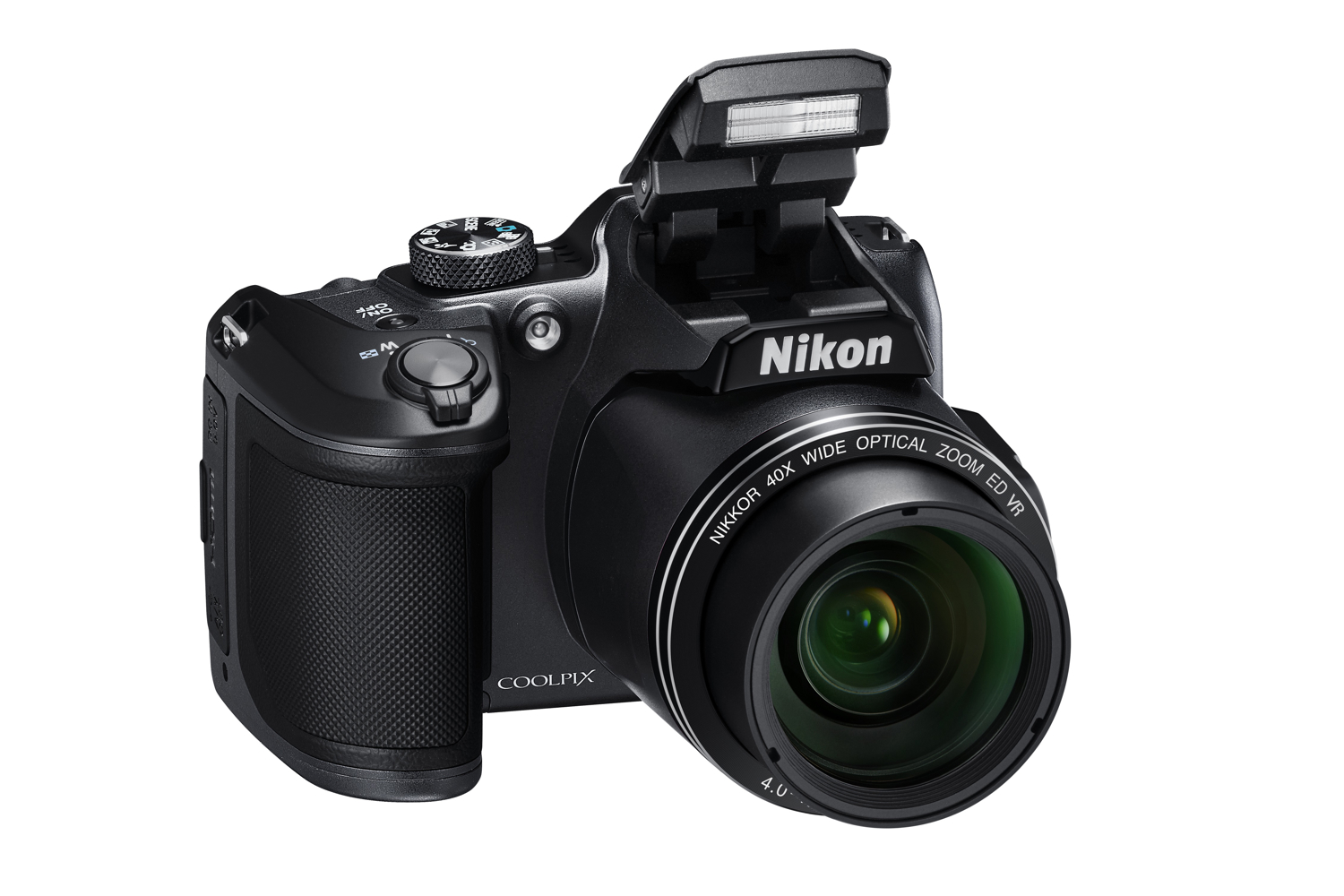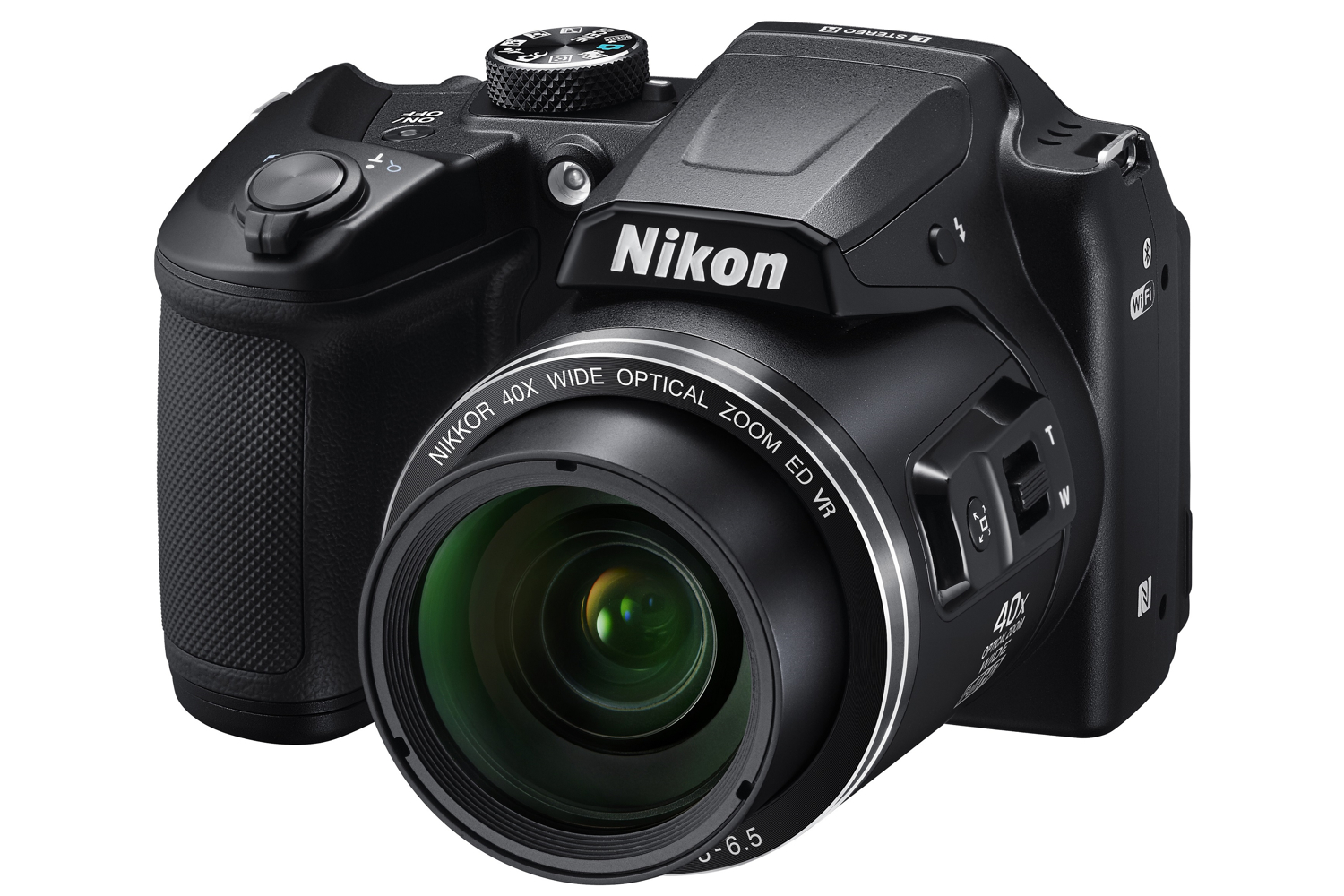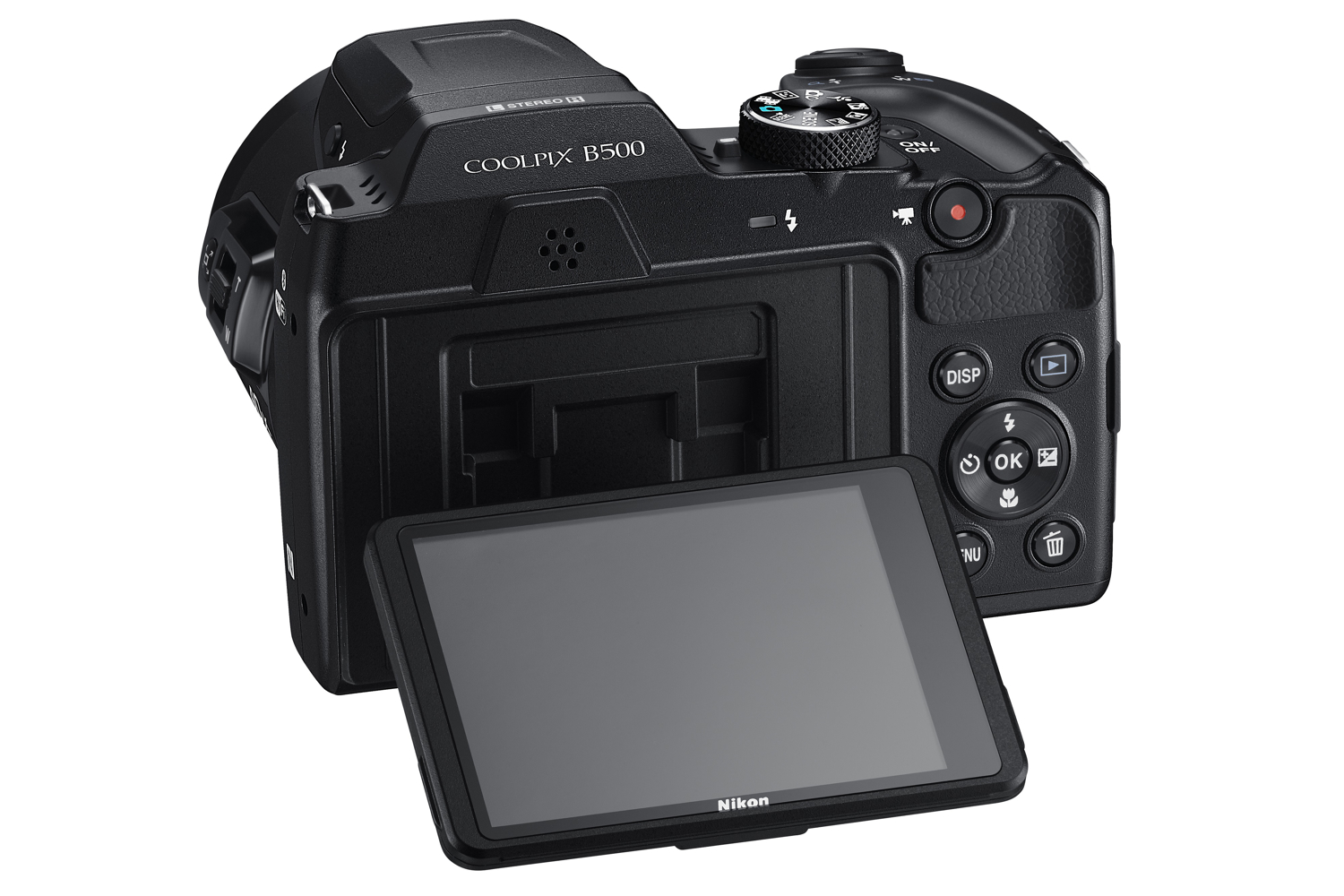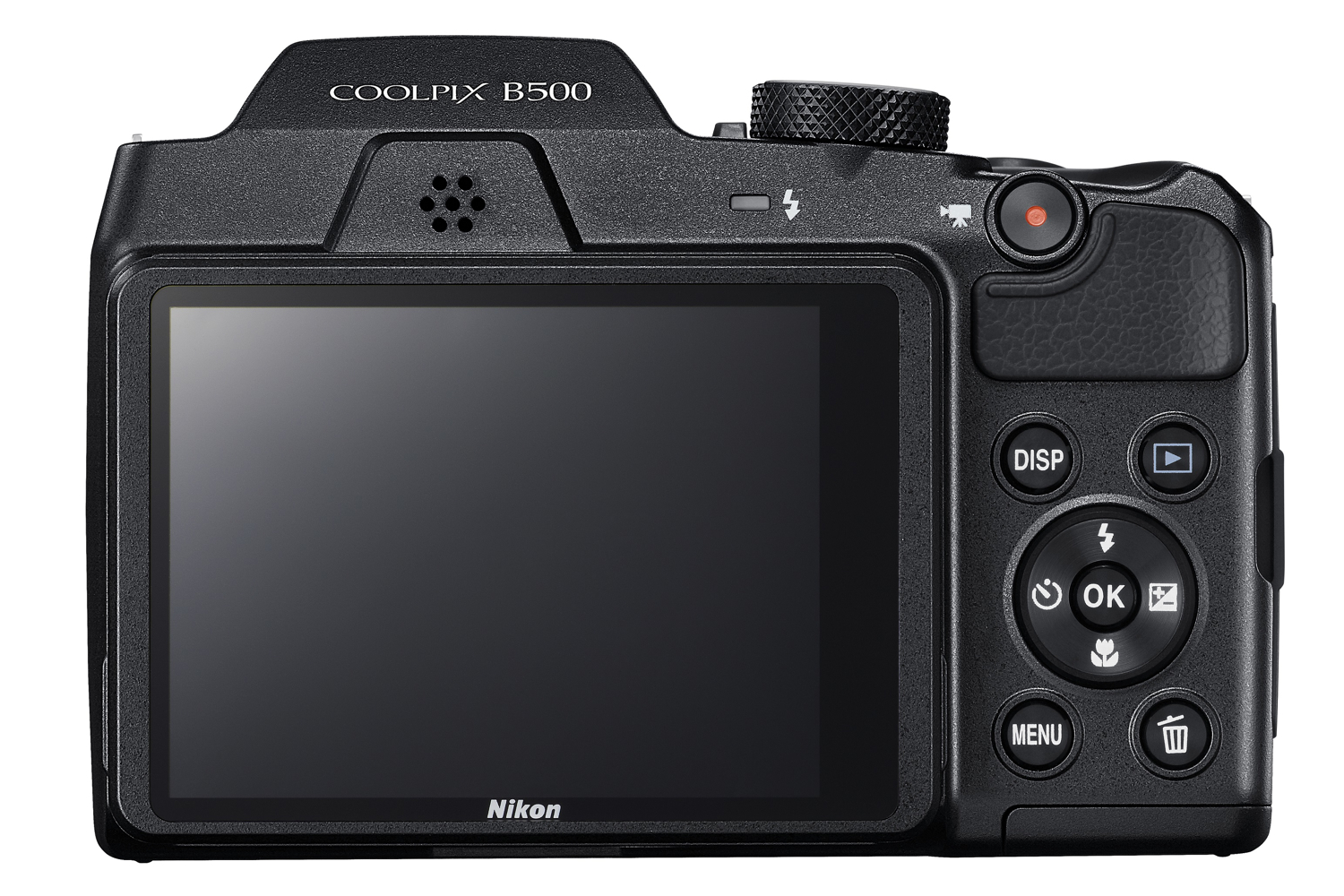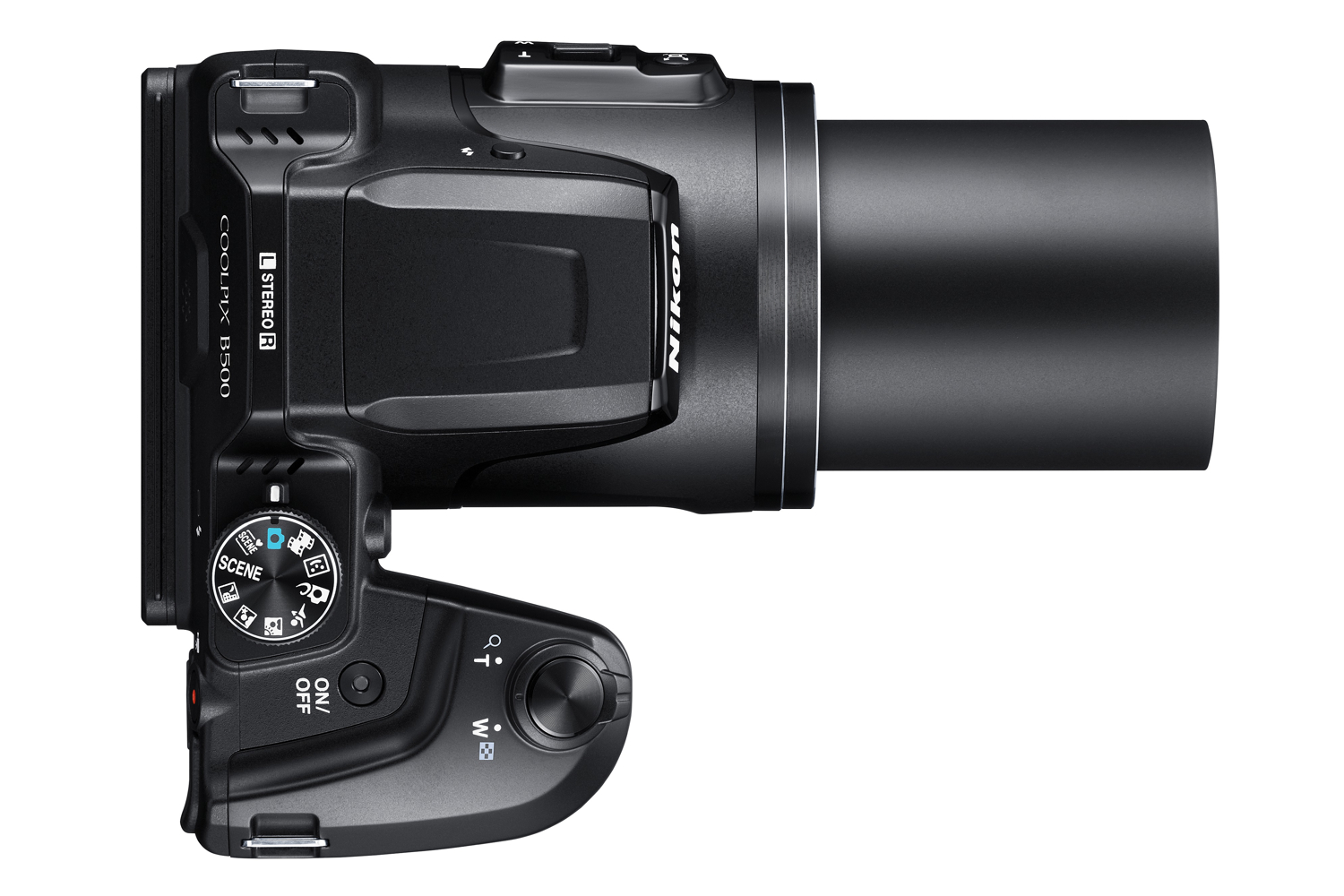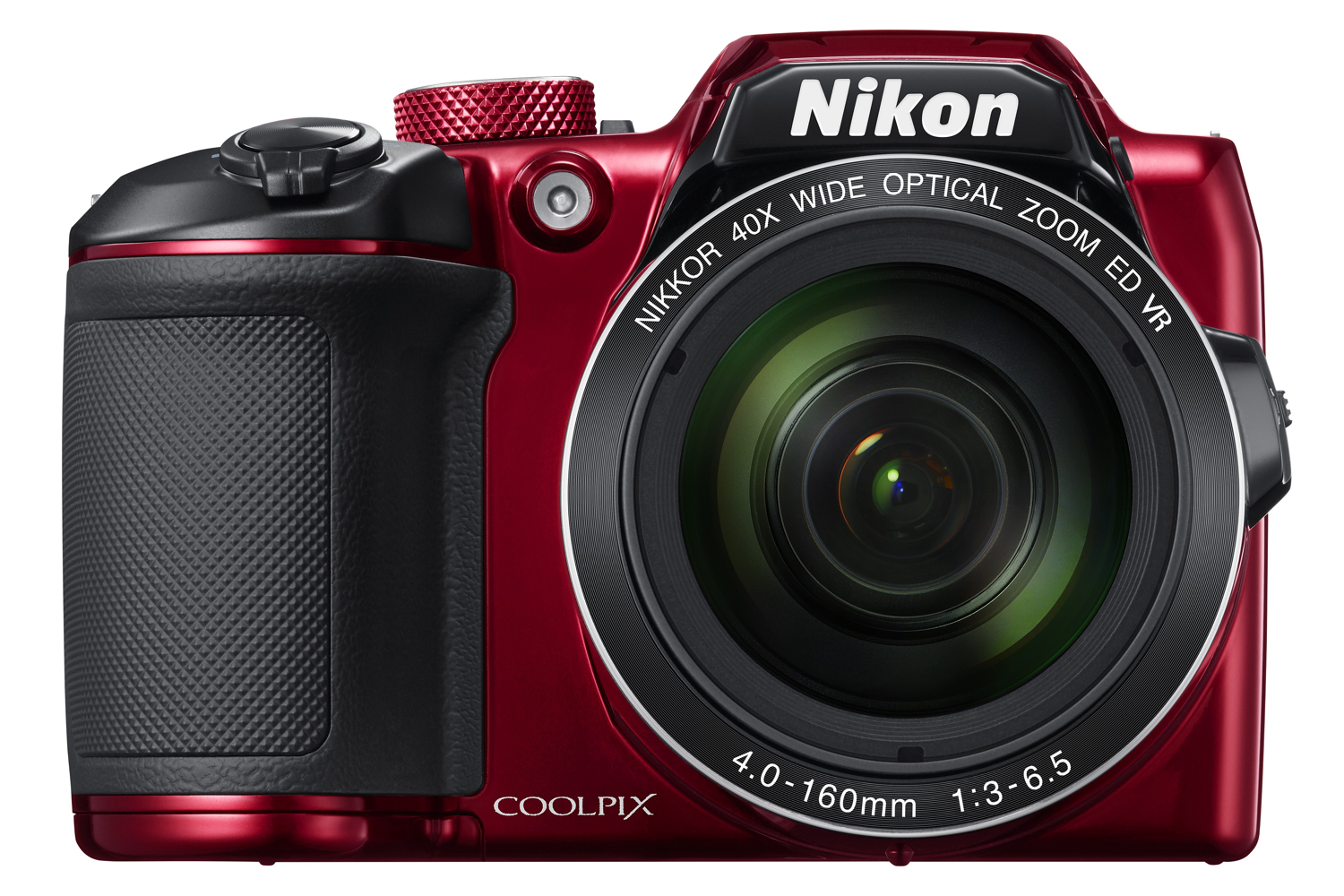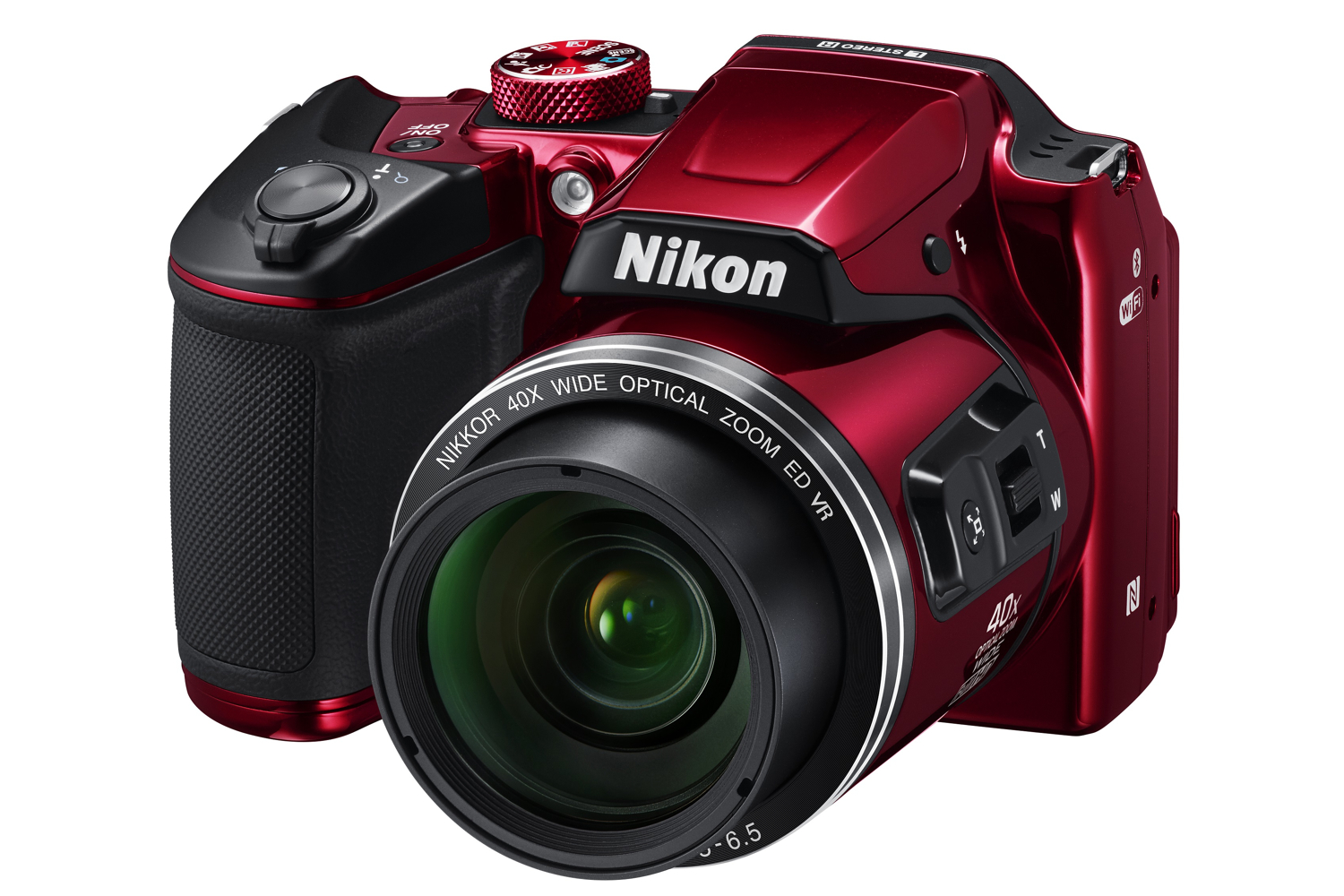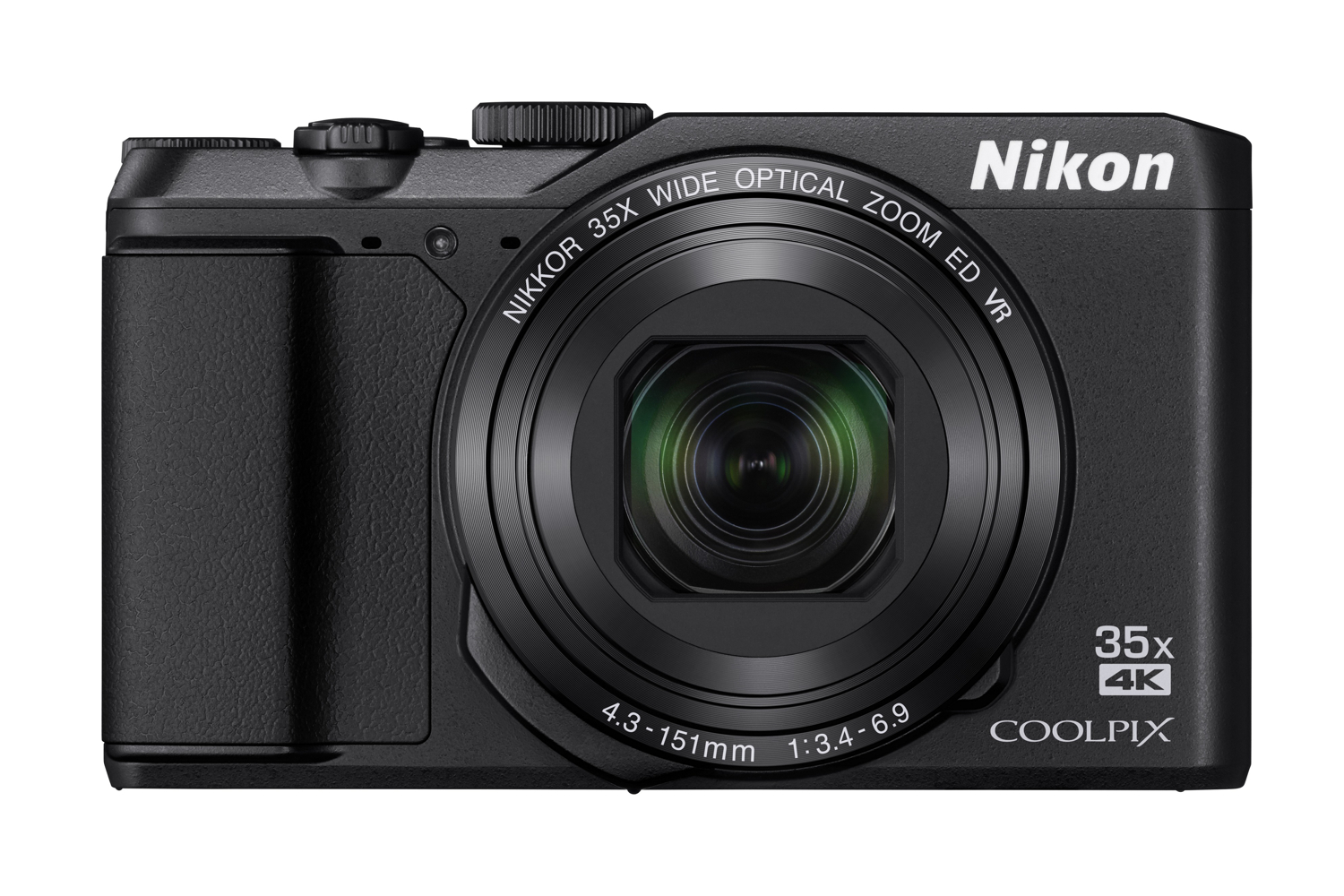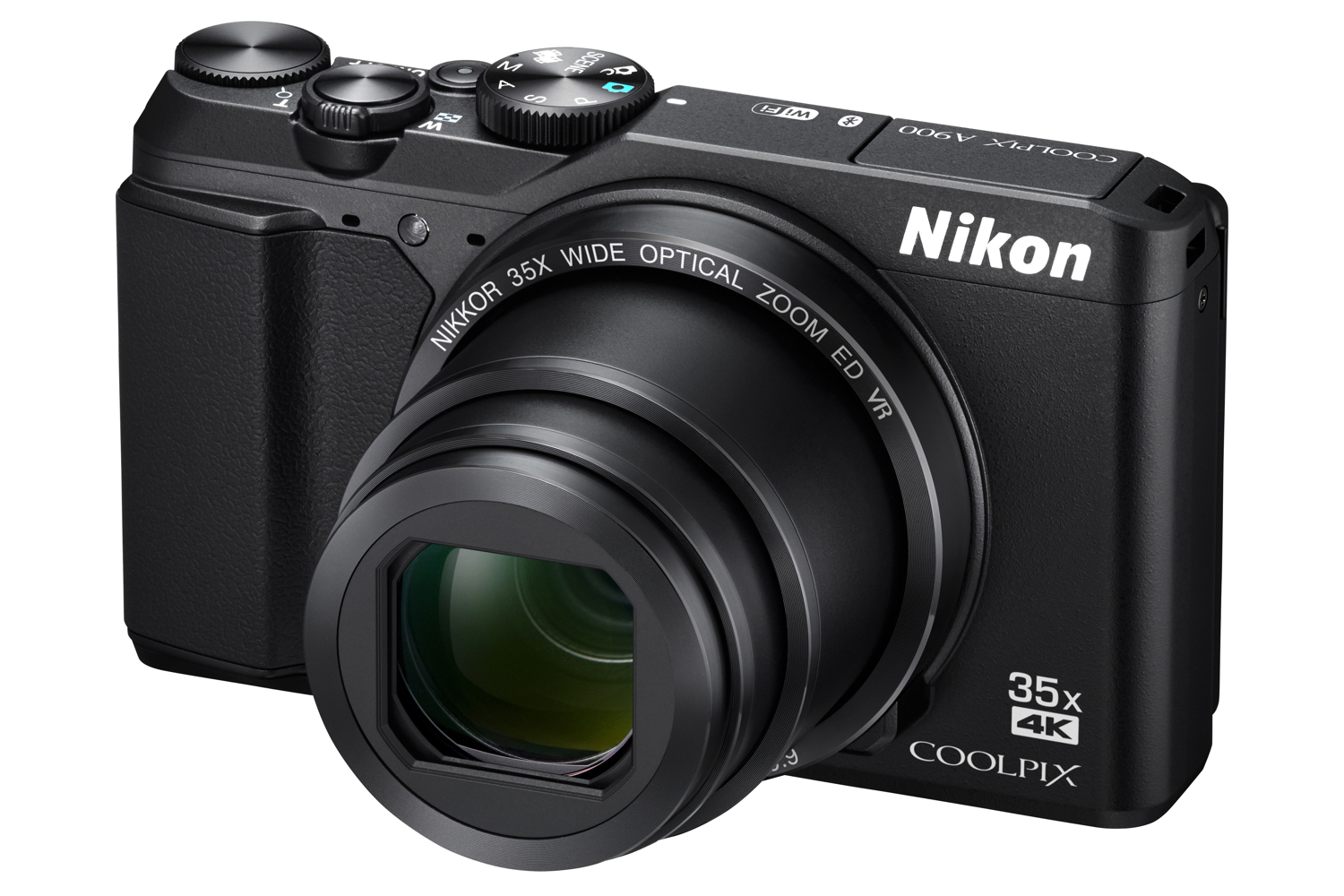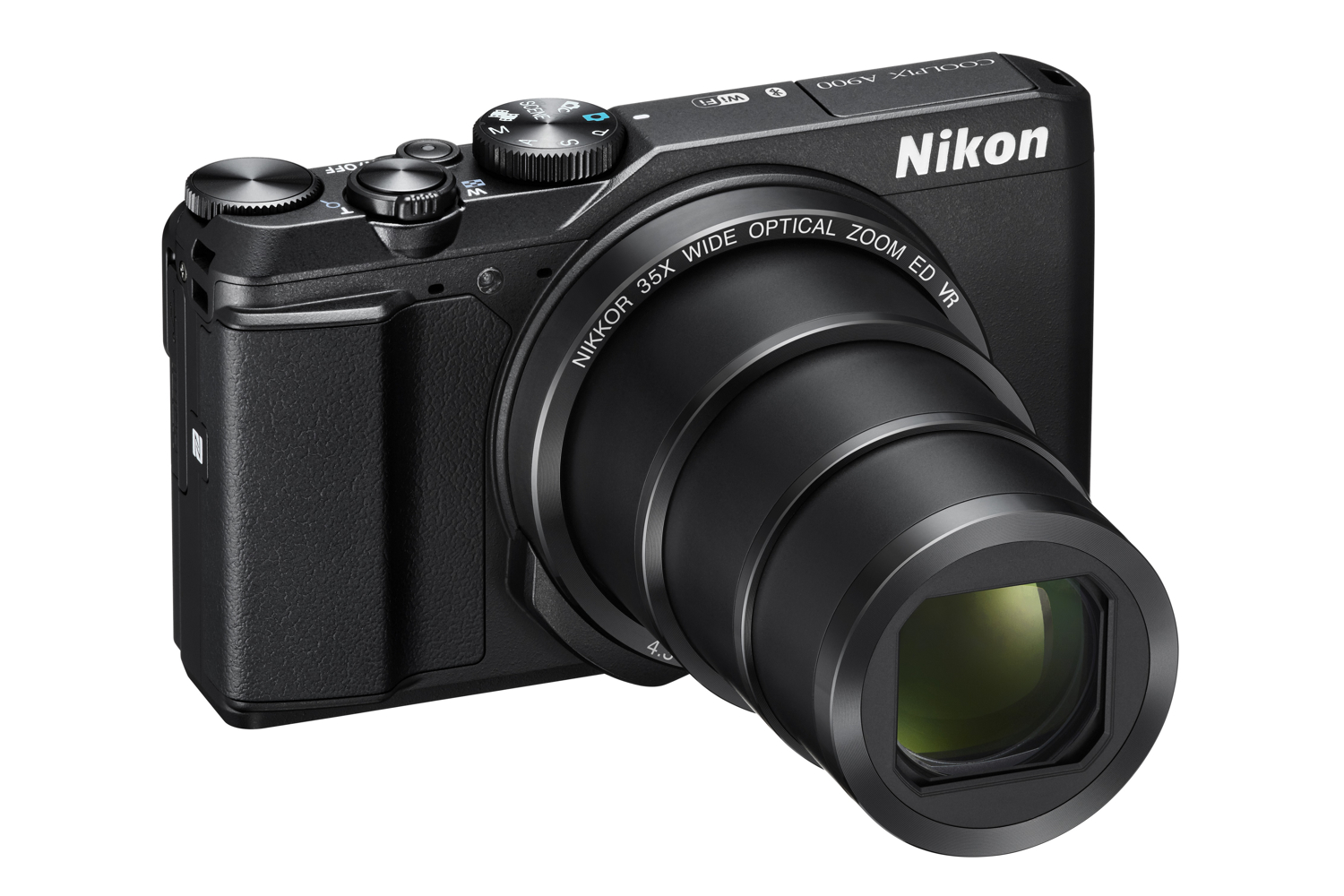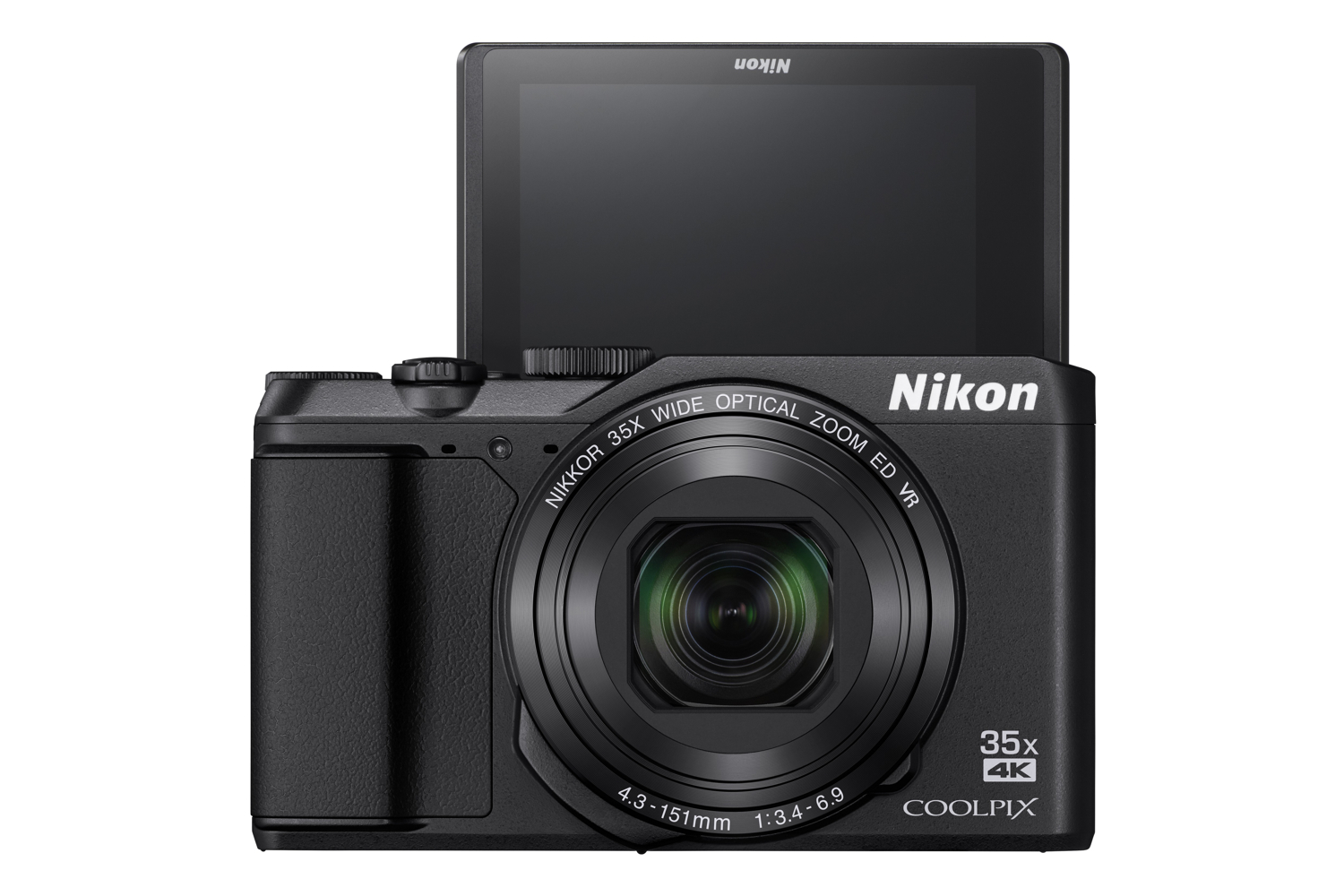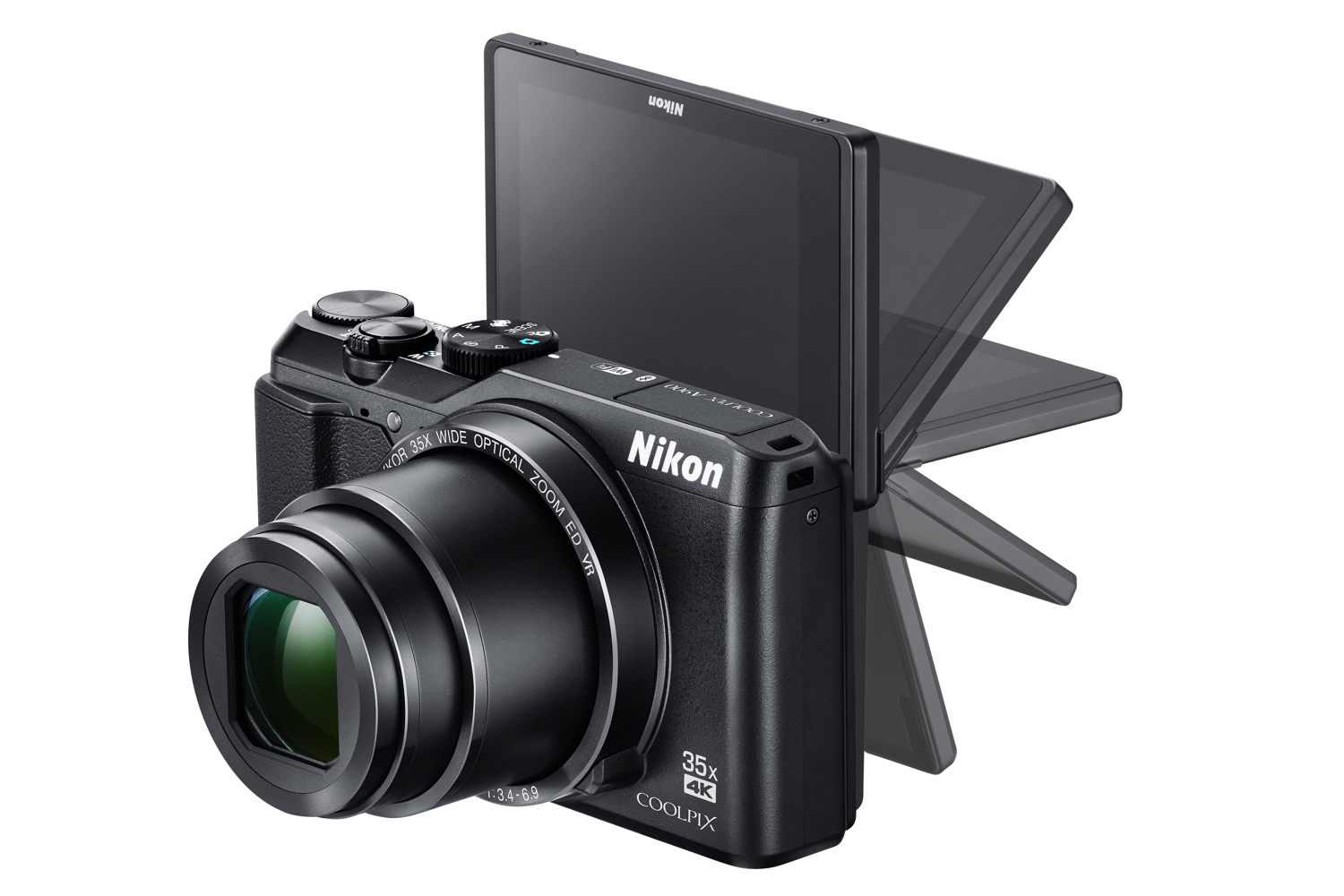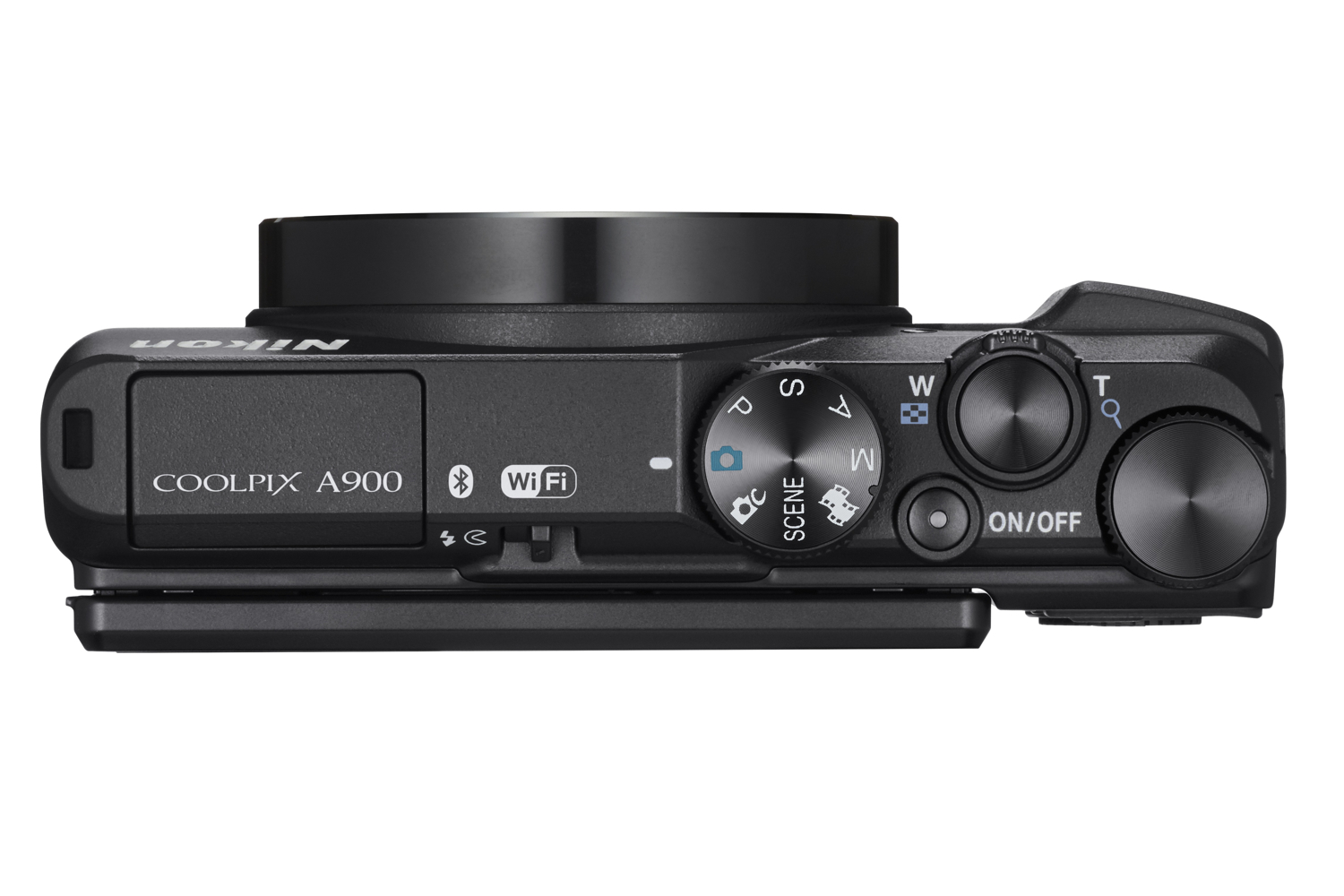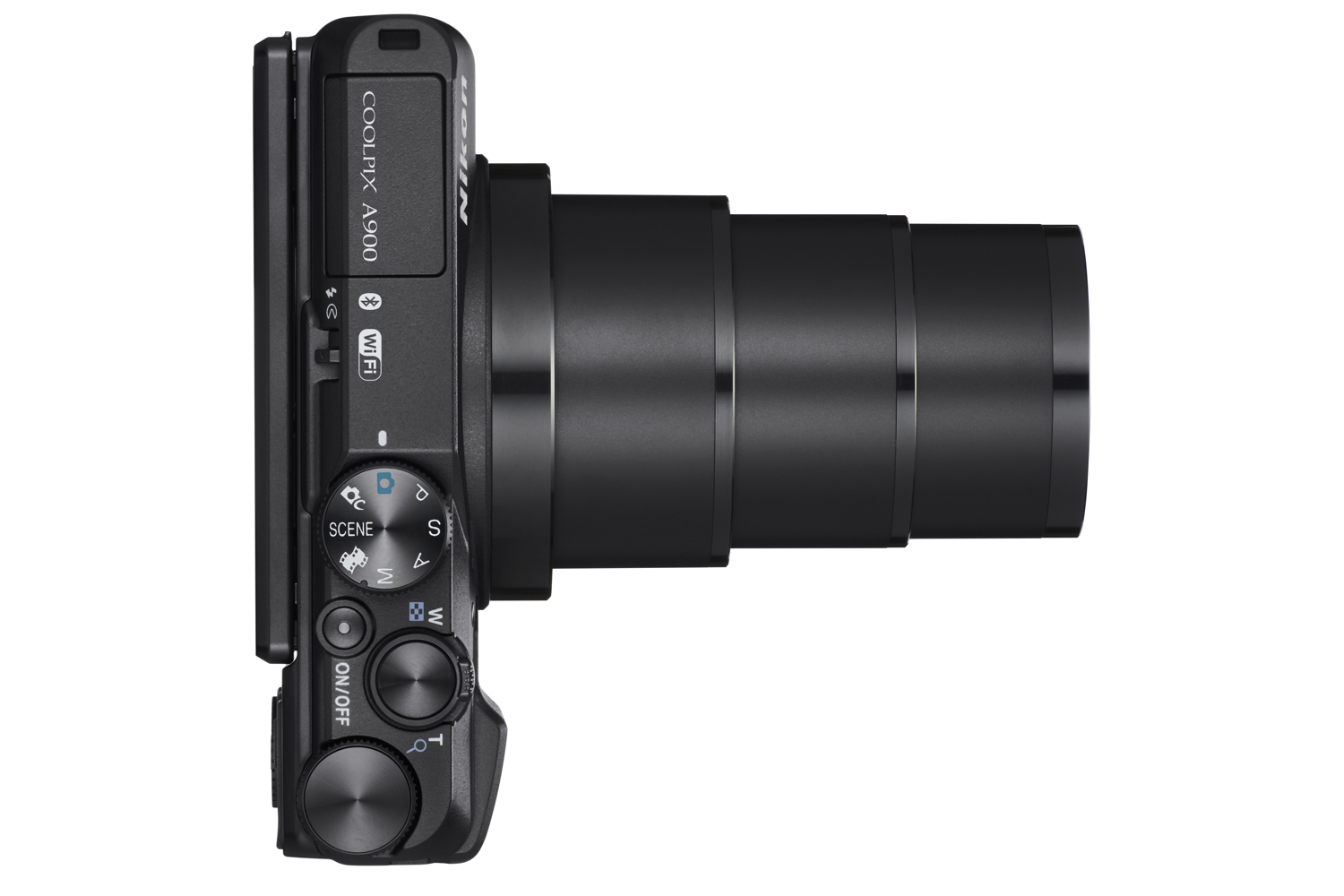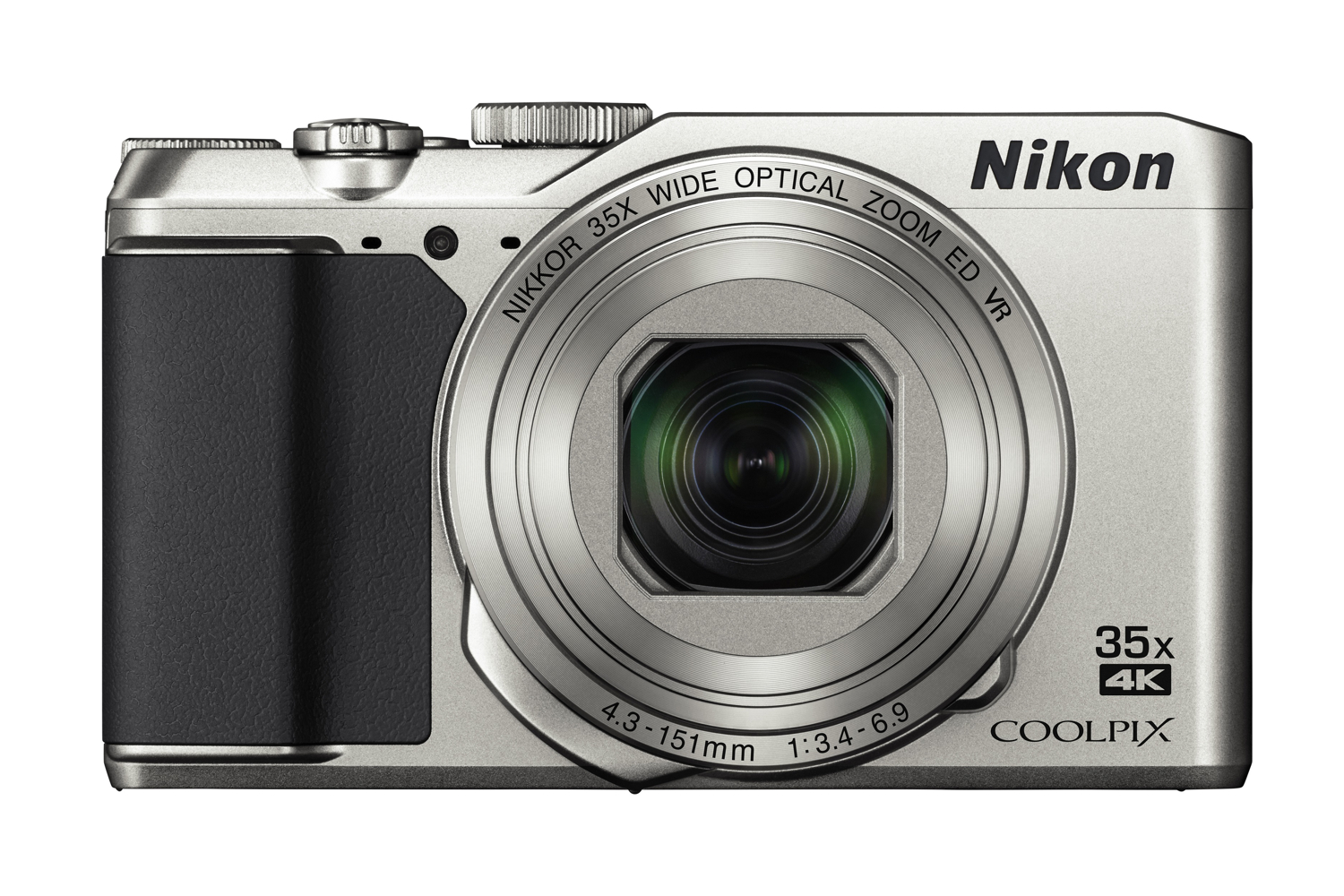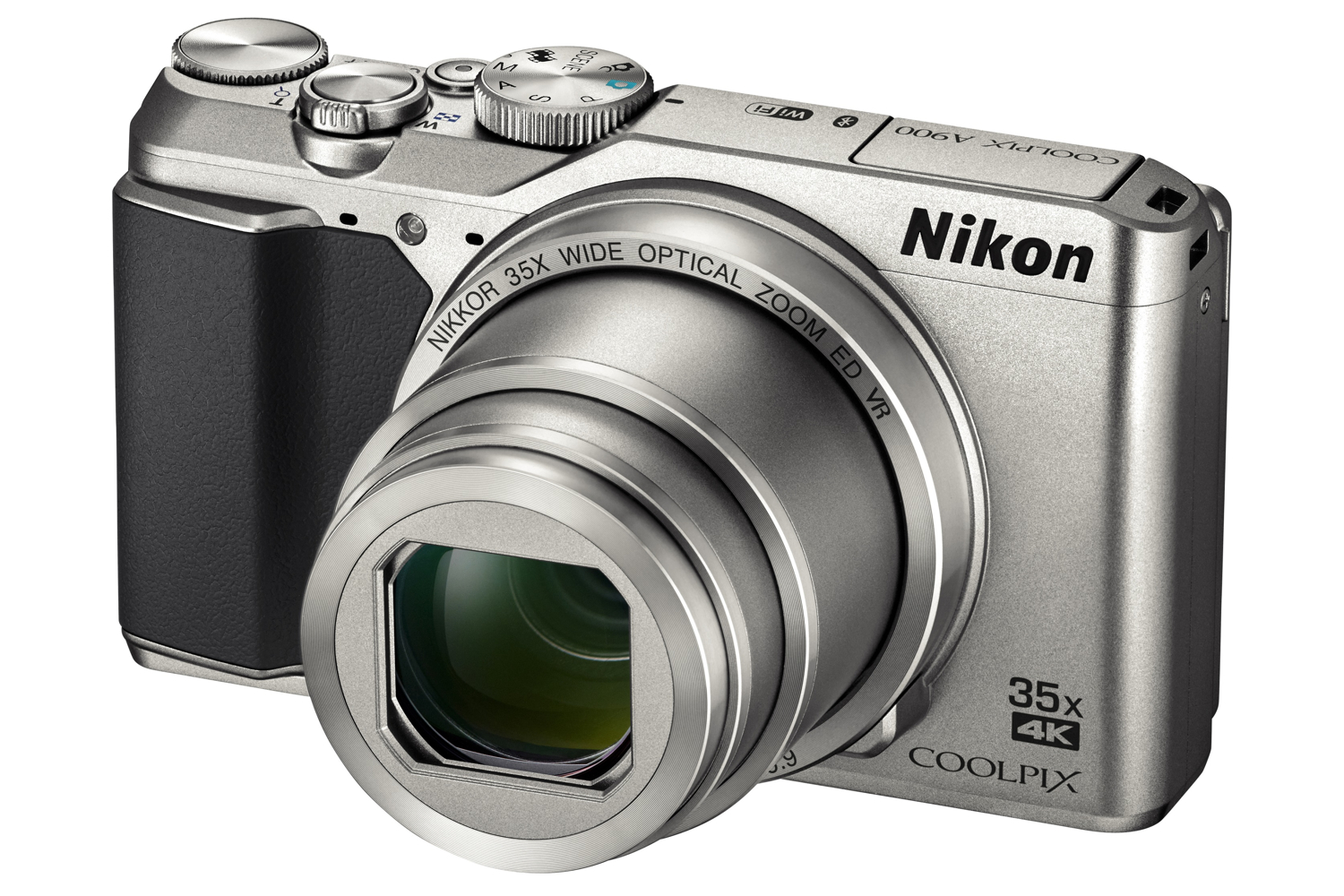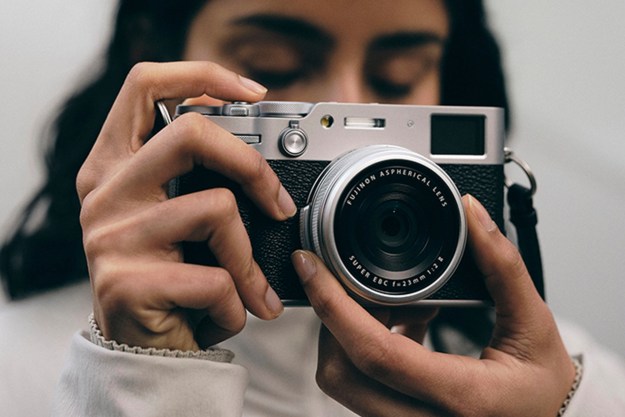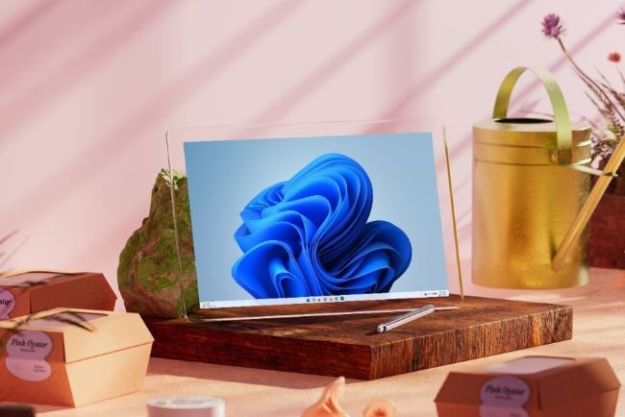In addition to its new premium DL-series, Nikon is introducing three new long-zoom (megazoom and super-zoom) cameras to its Coolpix lineup. Besides having a long optical zoom lens, the B700 ($500), B500 ($300), and A900 ($400) have Nikon’s new SnapBridge “always on” wireless connectivity, while some models can shoot 4K video. The cameras will go on sale in the spring.
With a traditional DSLR-like super-zoom body, the B700 uses a 1/2.3-inch 20.2-megapixel back-illuminated (BSI) CMOS sensor. It’s not a large sensor like the 1-inch variant used in the DL-series, but it’s typical of point-and-shoots. The lens has a 60x zoom with Dual Detect Vibration Reduction and 5-Axis Hybrid Vibration Reduction (optical and digital) for videos, and the camera can shoot 5 frames per second (fps) continuously. The B700 can shoot RAW photos and 4K videos at 30p. The 3-inch LCD is a vari-angle type that flips out and tilts into a variety of positions. ISO sensitivity ranges between 100-3,200. For more advanced users, there are several shooting modes and manual settings.
The B500 is similar in design to the B700, but it uses a 16-megapixel sensor and zoom is up 40x. A budget option, it’s powered by AA batteries instead of rechargeable lithium-ion, and lens-shift Vibration Reduction. It has a tilting 3-inch LCD, and movie capture is limited to Full HD 1080 at 30p. ISO ranges from 125-6,400. There’s no RAW capture. The camera will be available in black or red.
The A900 is a compact model with a 35x zoom (lens-shift VR). What it lacks in optical zoom, it makes up for with its pocket-friendly form-factor. It uses a 20-megapixel BSI CMOS sensor, and can shoot 4K UHD at 30p. The 3-inch LCD is a tilting version, and ISO ranges from 80-3,200. The camera will be available in silver or black.
Editors' Recommendations
- The best point-and-shoot cameras
- Nikon meshes 2,000mm zoom capabilities with 4K video in the superzoom P950

